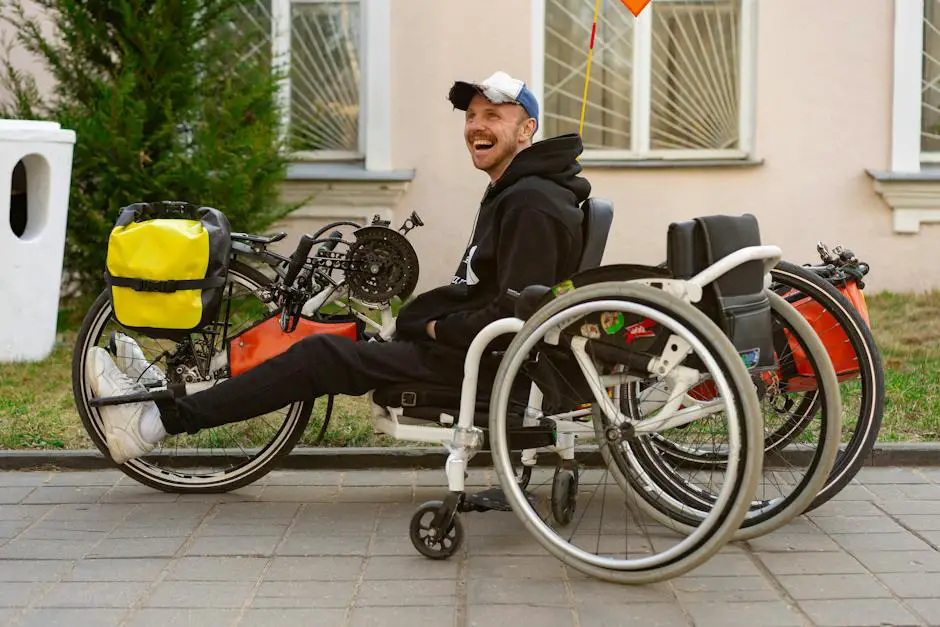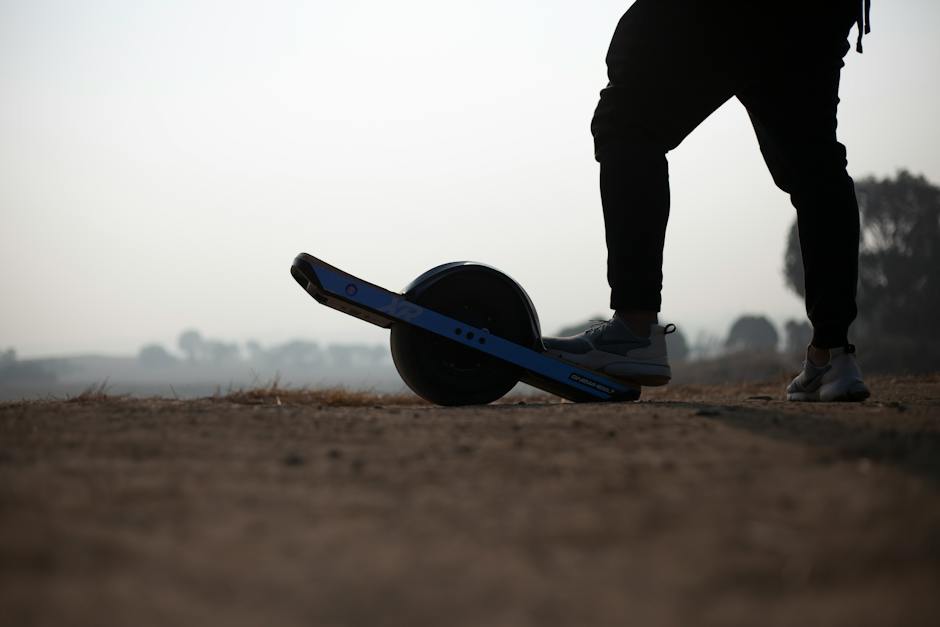The rise of electric skateboards has transformed the urban commuting landscape, offering a blend of convenience, speed, and eco-friendly transportation. At the heart of this transformation is the delicate interplay of sophisticated mechanical and electronic components. For enthusiasts and hobbyists eager to harness the full potential of their electric skateboards, developing a firm understanding of its mechanics is pivotal. This includes delving into the core elements such as motors, batteries, and electronic speed controllers (ESCs), as well as grasping the nuances of how these components synchronize to respond to the featherlight touch of a remote control. Beyond the mere technicalities, we embark on a journey through the varied spectrum of remote control technologies, which range from the ubiquity of Bluetooth and RF (radio frequency) to the expansive reach of Wi-Fi. Being well-versed in these areas not only enhances the riding experience but also paves the way for innovation in the burgeoning world of portable skateboard remotes.
Understanding Electric Skateboard Mechanics
Mastering the Electric Skateboard: A Journey in High-Tech Cruising
Whether you’ve seen them whizzing by on city sidewalks or coasting through parks, electric skateboards have carved a unique niche in the realm of personal transportation. They’re not just a fad—they’re an exhilarating blend of traditional skateboarding and cutting-edge technology, granting a sense of freedom and speed to those willing to hop on. Understanding how these high-tech decks function and interface with their remote controls can heighten the overall experience, allowing one to skate with not just confidence but also with profound insight.
At their core, electric skateboards are marvels of modern engineering. The primary components include a sturdy deck (often reinforced with layers of material for added durability), polyurethane wheels, and one or more electric motors. The motors are connected to the wheels—either directly or via a belt drive system—that provides the thrust needed to propel the rider forward.
Now, the heartbeat of an electric skateboard is its battery, which is typically mounted under the deck. This rechargeable power source varies in capacity and type, with lithium-ion batteries leading the charge for their longevity and efficiency. The capability of the skateboard, such as range and speed, hinges on the battery’s strength and quality.
The symphony of movement begins with the remote control, a handheld device that is the skateboarder’s command center. It’s not merely about on and off; the remote control is equipped with various functions to dictate the pace and flow of the ride. The interface usually features a throttle for acceleration, a trigger or button for braking, and sometimes toggle switches to adjust settings like speed modes or even engage reverse functionality.
Transmitting commands between the remote and the skateboard involves a reliable wireless connection—often Bluetooth. This ensures real-time responsiveness, crucial for situations that require immediate action, such as dodging obstacles or halting for traffic. Riders can appreciate the nuance in their handheld controller’s response, determining if they want a gentle acceleration curve or a more aggressive approach, all within thumb’s reach.
Furthermore, some remote controls house an LCD screen, offering a live feed of vital statistics such as current speed, remaining battery life, and travel distance. This data assists skaters in making informed decisions about their ride, ensuring they don’t get caught with a dead battery miles from home or inadvertently breaking speed laws.
It’s imperative to pair the remote with the skateboard before setting out. This usually entails holding down a specific button or combination of buttons until the devices sync. Be vigilant about this step; it can make a world of difference in preventing unexpected disconnects that could lead to a less pleasant experience.
An electric skateboard doesn’t just start rolling the moment it’s powered on. Many designs include a safety feature that requires the rider to kick off manually before the motors engage. This precaution ensures that a board won’t jet off unexpectedly when turned on.
Through regular use and familiarity with their device, skaters develop a sixth sense for how the skateboard will react to each command issued from the remote. It becomes an extension of the rider’s intentions—a dance of sorts between man and machine, where the line between thinking and doing blurs beautifully.
To sum it up, the interplay between electric skateboards and their remote controls is a testament to how far technology has come in enhancing our favorite hobbies. With the understanding of their function, riders are well-equipped to soar on their high-tech steeds, transforming every journey into an adventure that is both controlled and thrilling. Welcome to the era of intelligent skating—where every push of a button leads to a new horizon.

Remote Control Technologies
Taking the reins of the electric skateboard with remote control technologies is akin to becoming the conductor of your own pavement symphony, orchestrating your moves and routes with precision. But what exactly runs this show behind the scenes? There’s more than meets the eye when it comes to the remote control technologies employed in these modern-day chariots.
One might think it’s all about Bluetooth, but in this arena, radio-frequency (RF) technologies are also the unsung heroes. Most remotes communicate with their boards using a 2.4GHz radio transmitter, providing a responsive and stable connection even in areas crowded with other wireless signals. The result? A seamless interface between rider input and skateboard performance.
When it comes to control, electric skateboard enthusiasts have seen the evolution from basic to more advanced remotes. Simple remotes offer essential functions – go, stop, and sometimes a way to toggle between speed modes. On the other end, premium options feature ergonomic designs that provide a comfortable grip and added functions like cruise control, reverse, and programmable acceleration curves.
Let’s not overlook the significance of failsafe mechanisms integrated into these technologies. These safety measures ensure that if the remote loses connection or its battery dies mid-ride, the skateboard will slowly come to a stop, rather than zooming off uncontrollably.
Connectivity is another pillar of remote control tech. Some high-end boards offer smartphone integration, allowing riders to use their mobile devices as a secondary or even primary controller through dedicated apps. This integration also opens the door to tracking your rides, customizing board settings, and updating firmware to keep your board running at peak performance.
Speaking of staying up to date, the latest iterations in remote technology can even enable voice control, allowing riders to command their boards with simple verbal cues, though this feature is still on the vanguard and not widely available.
In the end, the beauty of these electric skateboards lies in the union of rider and machine, a partnership where remote control technology plays a pivotal role. Whether you’re carving the concrete waves or embarking on an urban commute, the power in your hands – enabled by the invisible yet invincible remote technology – shapes your ride.

Designing and Programming the Remote Control
Moving forward into the technical deep dive, let’s get hands-on with the design and programming of a custom remote control for an electric skateboard. This is where creativity meets practicality, and the true fun begins.
First things first, the heart of the remote is its microcontroller – a small computer on a single integrated circuit. Any seasoned hobbyist might recommend an Arduino or a similar microcontroller board for its ease of use and vast online support. It’s like picking the perfect deck; it has to be right for the job.
For transmission, Radio-frequency (RF) modules are typically preferred, offering robust communication. NRF24L01 modules, which operate at 2.4GHz, are reliable choices. They are like the wheels of our system – they’ve got to keep things rolling without a hitch.
Next up is the failsafe mechanism. This is a critical safety feature that ensures the remote sends zero-throttle signals if the connection is lost. Think of it as the helmet of the programming world – it’s essential protection that shouldn’t be overlooked.
In terms of connectivity, options have expanded. The quintessential setup involves pairing a Bluetooth module with a smartphone app. These apps can be created using software like MIT App Inventor for those who want to simplify the coding process. Imagine customizing the board’s lights or turbo settings from your phone; it’s like having a skate park in your pocket.
Smartphone integration is a neat feature, but for those who yearn to keep their phones tucked away, a dedicated remote built from scratch is ideal. A simple OLED screen can be included for real-time data display – speed, battery levels, and more. The right screen is like the best grip tape – it should give you exactly what you need without overwhelming you.
But what about voice control? It’s an emerging possibility. With modules such as the Elechouse Voice Recognition V3, one could, in theory, control their electric skateboard with voice commands, but let’s leave that for the bravest DIYers. Voice control is like skating a vertical ramp for the first time; it’s an adrenaline rush but not without its risks.
In the coding sphere, the programming language should be intuitive; C++ is known for its balance between control and accessibility. It’s the street skating of programming languages – versatile and practical.
The remote isn’t just a tool; it’s the bridge between rider and machine. Each line of code fine-tunes this partnership. Implementing accelerometer or gyro sensors allows for gesture-based controls, adding another layer of interaction – analogous to learning new tricks on the deck.
When the code is compiled and the prototype assembled, trial runs are essential. They’re comparable to those first few wobbly rides; testing the bindings, wheels, and balance. Only through rigorous testing can the nuances of the ride be perfected to create a seamless flow of control.
Designing and programming a custom remote for an electric skateboard is an intricate but rewarding endeavor. Every decision from the microcontroller selection to programming language shapes the final user experience. This is technology in motion, a harmonious convergence of the digital and physical realms enhancing the thrill of the ride.
So now, to all skateboard tech enthusiasts, roll out your ideas, whip up some code, and transcend boundaries. Your perfect ride is waiting to be programmed. Happy skating and coding!

Mastering the intricacies of portable remote control features enriches the electric skateboarding experience, elevating it from a mere hobby to an art form. With an understanding of the technologies at play and a dedication to ergonomic design and precise programming, the remote becomes an extension of the rider, offering a seamless and intuitive connection to the board’s ESC. For the passionate enthusiast, this understanding is not the final destination but rather a gateway to boundless creativity and innovation in the field of electric skateboarding—a testament to human ingenuity and the pursuit of pushing boundaries on four electrically powered wheels.

